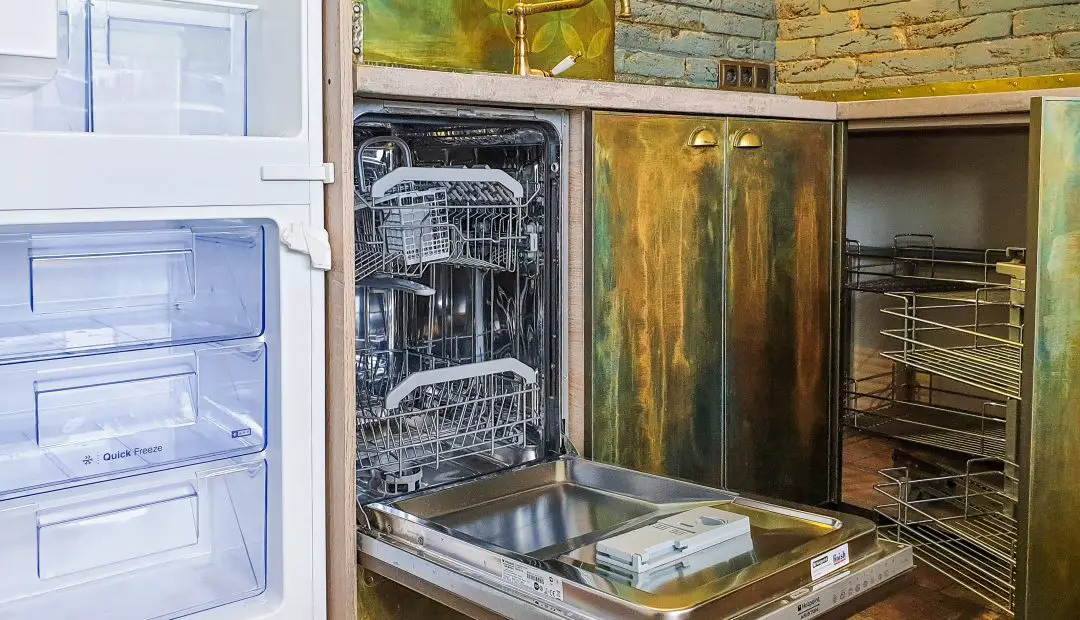Your dishwasher not heating but element is good? You’re likely puzzled about what’s going on. Thankfully, this problem is common and usually solvable. In this guide, we’ll walk you through step-by-step instructions for troubleshooting.

Check the Control Board
If your dishwasher is not heating but the element is good, the control board might be at fault. Here’s how to thoroughly inspect it:
Step 1: Unplug Your Dishwasher from the Electrical Outlet
Safety comes first. Before you begin, unplug your dishwasher from the wall socket to prevent any risk of electric shock. It’s typically a good idea to also turn off the circuit breaker for extra safety.
Step 2: Open the Door and Remove the Screws Around the Border
To access the control board, you’ll first need to open the dishwasher door completely. Locate the screws around the inner perimeter of the door. These screws usually hold the front panel and control board in place. Use a screwdriver to carefully remove these screws and set them aside in a safe place.
Step 3: Locate the Control Board
With the screws removed, gently lift the door panel. The control board is usually located at the top of the door, behind the control panel where the buttons and display are. It’s often a green or black rectangle encased in plastic.
Step 4: Carefully Check for Any Signs of Burning or Damage
Inspect the control board closely. Look for any scorch marks, discolored components, or loose connections. These could be signs that the control board is malfunctioning. If you notice any of these issues, it may need to be replaced.
Examine the Thermostat
The thermostat is another key player when your dishwasher is not heating but the element is good. Here’s how to check it:
Step 1: Turn Off and Unplug the Dishwasher
Again, start by unplugging the dishwasher and turning off the corresponding circuit breaker for safety.
Step 2: Remove the Lower Panel to Gain Access to the Thermostat
You’ll need to remove the lower front panel of the dishwasher to access the thermostat. This panel is usually secured with screws, so use a screwdriver to take it off.
Step 3: Identify the Thermostat
Once the lower panel is removed, look for the thermostat. It usually resembles a small metal disc with two or more wires connected to it.
Step 4: Use a Multimeter to Check for Continuity
Get a multimeter and set it to the continuity test mode. Disconnect the wires from the thermostat and touch the multimeter probes to the thermostat’s terminals. If the multimeter shows no continuity, the thermostat is likely faulty and should be replaced.
Test the Heating Element
Even if the heating element seems fine, double-checking is wise. Here’s how:
Step 1: Disconnect the Dishwasher from the Power Source
Make sure the dishwasher is unplugged and the circuit breaker is turned off.
Step 2: Locate the Heating Element
The heating element is usually located at the bottom of the dishwasher, often in a circular shape. It is the part that heats the water during the washing cycle.
Step 3: Use a Multimeter to Test for Resistance
Set your multimeter to measure resistance (measured in ohms). Disconnect the wires connected to the heating element, and place the multimeter probes on each terminal. A reading between 15 and 30 ohms generally indicates a functional heating element. Anything outside this range suggests it might be faulty, even if it appears fine.
For more articles on dishwashers, click here: Dishwasher Problems and Solutions: Your Ultimate Guide to Hassle-free Dishwashing
Inspect the Wiring
If you’ve gone through the other troubleshooting steps and your dishwasher is still not heating despite the element being good, there could be a problem with the wiring. Electrical issues can be a bit intimidating, but here’s how to carefully check for them:
Step 1: Unplug the Dishwasher
Before you begin any inspection or repairs, always prioritize safety. Unplug the dishwasher from the wall socket, and for added safety, turn off the circuit breaker connected to the dishwasher.
Step 2: Open the Panel to View the Wiring
To access the dishwasher’s wiring, you’ll need to remove the access panel that is usually located at the bottom front of the unit. This panel is typically held in place by screws. Using a screwdriver, remove the screws and carefully take off the panel. Make sure to keep the screws in a secure place for reassembly later.
Step 3: Look for Any Loose Connections or Damaged Wires
Once the panel is removed, you’ll see a maze of wires. Don’t be overwhelmed; you’re looking for some specific signs. Inspect each wire for any fraying, discolouration, or burns. Make sure to also check the connectors and see if any are loose or corroded. These could be indicators of electrical issues that are preventing your dishwasher from heating properly.
Step 4: If You Find Any, Consult a Professional for Repair
If you notice any problematic wires or connections, it’s strongly advised that you consult a qualified appliance repair professional. Electricity is not something to experiment with, and a professional can safely and effectively handle the repairs.
Dishwasher Not Heating But Element is Good: Consult a Professional
If you’ve tried all the above steps and your dishwasher is still not heating but the element is good, it’s time to consult a professional. Sometimes the problem may be too complex for DIY solutions.